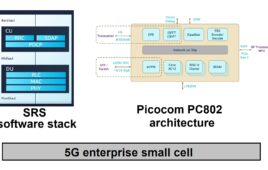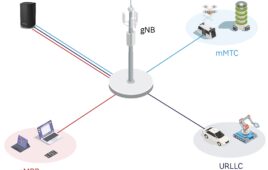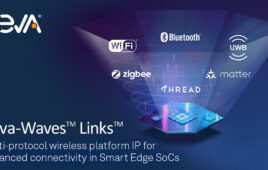Mobile World Congress (MWC) this year saw more IoT and connected devices on stands than ever before. Car manufacturers from Ford to BMW showcased improvements in autonomous driving, and IoT focused solutions were being touted in every hall. Underpinning all of these advances are the industry’s plans for 5G mobile networks.
Though long a specter on the horizon, 5G has become a more tangible solution over the past 12 months. For example, at the Intel booth during MWC, 8K VR content was streaming across Intel’s own local 5G network, which was also providing 1 Gigabit data throughput speeds. Network infrastructure providers, in general, are now able to develop their networks in line with a common set of industry standards. While MWC was wrapping up, the International Telecommunications Union (ITU) released draft 5G guidelines. The final version, which will contain more specific 5G-related requirements, is expected to be completed by November of this year.
The hype around the new technology exists for good reason. 5G is coming and while it is still a few years away from its initial public roll-out, 5G will be able to solve many of the existing problems with 4G connectivity as well as open new avenues of opportunity. Just as 4G availability has allowed for the global rise of the smartphone, the rollout of 5G is bound to enable the global rise of other devices and services that end-users, once accustomed to, won’t be able to live without.
Let’s dive into the news that came out of MWC to find out what conversations are being had around 5G.
What will 5G look like?
5G will be the next generation of mobile networks—offering speeds to end-users that will allow them to download HD movies in seconds (as opposed to minutes) and enable more data-intensive tasks at a higher quality. Autonomous cars, for example, are expected to be transmitting 4,000 gigabytes of data a day to build up complex 3D maps of our environments and to accommodate the requirements of hundreds of on-board sensors.
Standards initially posited by the ITU maintain performance metrics such as 20 Gbps for downlink speed, 10 Gbps for uplink, and the ability to support one million devices per square kilometer, to name a few. These are, however, minimum requirements—once the technology becomes more prevalent in the coming years, we can expect:
- Faster data speeds—some industry players expect their 5G networks to be 10 times faster than today’s current 4G networks.
- Significantly reduced latency—latency associated with 4G clocks in around 50 ms, whereas 5G should be no greater than 4 ms including a specification of sub 1 ms for new critical applications such as vehicle-to-vehicle technology, where decisions need to be made and communicated instantly.
- Explosion of IoT—specific low-power wide area networks (LPWAN) are being rolled out to accommodate IoT devices on fixed wireless networks for niche and vertical markets; meanwhile, narrowband 5G networks like NB-IoT and LTE-M will have the capacity to support IoT devices and systems for both mobile and fixed applications, and will play a key and integrated role in connecting and carrying data across IoT networks.
Given the major announcements out of MWC, it’s likely that the industry will see some of the first commercially deployed 5G networks somewhere between 2019 and 2020.
MWC’s 5G vision
So far, one of the more interesting talks at MWC came from the FCC’s new chairman Ajit Pai, where he spoke about the FCC’s role in ushering in new 5G technologies across the United States.
Pai used the opportunity to discuss the Commission’s former position on net neutrality and regulation, expressing concerns about the decline in U.S. broadband investment. He stated that the Commission will employ a new philosophy of “light touch” regulation to help the wireless industry develop and deploy the required infrastructure to enable 5G technologies. That’s a promising statement to the industry from the leading regulatory body in the U.S., and the industry is taking note.
In addition to ITU’s announcement mentioned earlier, 3GPP, a wireless standards group for the industry (comprised of seven national wireless and telecom organizations such as the U.S. Alliance for Telecommunications Industry Solutions and China’s Communications Standards Association) has been making steady progress on the 5G New Radio (5G NR) standard — an emerging standard for 5G wireless radio that’s entering interoperability field trials from multiple 3GPP-member companies in the second half of 2017. Countries for the initial field trials include Australia, Korea, and the U.S.
Verizon, who has been touting some of its own forays into 5G, is developing its own flavor of the next-generation wireless network. Rolling out in 11 US markets by mid-2017, Verizon will offer a pilot service with speeds in the gigabits per second range worthy of the 5G label. It’s not geared for mobile users; instead it’s optimized for individual homes as a broadband replacement. Meanwhile, AT&T has been working on both mobile and fixed pilot applications, selecting Austin and Indianapolis for field trials.
Judging from what we saw at MWC, it is safe to say that 5G development is picking up steam fast. If the impact 5G has on society is anything like 4G, then it’s also likely warranted. Time will tell.



